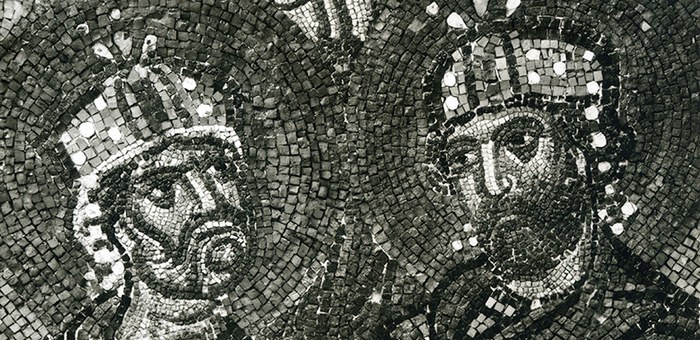In 2022-2023 two one-year research fellowships had been published by the Bologna University Department of Arts and won by the young scholars Martina Bordone and Antonino Tranchina.
Guglielmo Matthiae (1909-1977) was one of the most important Italian medievalists. He graduated at Rome under Pietro Toesca, like Federico Zeri many years before, and soon joined the Fine Arts administration. Among his many roles there, he went first to the Latium Monuments Superintendency, then to the L'Aquila counterpart, becoming Superintendent in Abruzzo from 1958 to 1966. At Aquila University he taught History of Medieval and Modern Art for over twenty years. From 1966 to 1974 he was Superintendent to the Rome Galleries.
Matthiae’s main scientific focus was early Christian, Byzantine and Romanesque art centring largely in Abruzzo, Rome and Latium.
Throughout his research corpus of over 80 publications he made great strategic use of photographic material.
His archive of loose photographs, albums and drawings was incorporated in the Zeri Photo Archive in the 1990s. Following his usual practice, Federico Zeri divided and sorted the collection into the folders comprising his own personal archive.
The first part of the research was thus to reconstruct the extent and original characteristics of the Matthiae archive, a process requiring systematic sifting of the various sections of the Zeri Photo Archive. This enabled the researchers to track down Matthiae’s own mapping of the routes by which models and contents went back and forth between east and west across the medieval Mediterranean.
It was also possible to trace more thoroughly the steps in Matthiae‘s historical and critical thinking as to the birth and development of Byzantine art and its role in the evolution of European art.
In 2024 Martina Bortone’s research grant has been extended for one year to enable her to catalogue certain unpublished materials from the Matthiae archive. This particularly concerns a batch of 1,100 photos that will take their proper place in the Zeri Foundation online database. Many of them will form an essential resource for those investigating exchanges between East and West in the second half of the thirteenth century, especially as concerns the illustration of illuminated codexes.
The results of the research will be presented at some stage during the training course Duecento. Contesti figurativi in Italia, tra Europa e Mediterraneo being held this year.
The research grants have been financed by the Friends of Federico Zeri Association, thanks to a donation by collector Simonpietro Salini.
Martina Bordone (Ivrea, 1993) graduated in 2018 from Florence University, where he also gained a research doctorate in History of Art, his thesis being on individual devotional books in Italy across the 13th and 14th centuries. During his MA studies, he spent time at the Université Paris 1 Panthéon-Sorbonne, after which he was several times hosted by the Bibliothèque Nationale de France (Département des Manuscrits e Bibliothèque de l’Arsenal). As well as studying individual devotional literature in its various forms, he has explored and written about liturgical and iconographic exchanges between East and West, painting and miniature in central-north Italy from the 13th to the 15th century, and the relationship between text and image in medieval and early Renaissance illuminated codexes.
Antonino Tranchina (Palermo, 1985) studied Modern Literature and Visual Arts at Palermo and Bologna University. In 2015 he was awarded a research doctorate in History of Art at the University ‘La Sapienza’ University, his dissertation being on evidence of art culture generated by the monastery of Salvatore in lingua Phari a Messina during the 12th century.
He researched into southern Italian late medieval monasticism as a research assistant at the Bibliotheca Hertziana- Max Planck Institute for History of Art in Rome, with which he still has various ongoing projects. He is currently on the short-term teaching staff of Udine University teaching the History of Miniature.
His particular focus is on how the concepts of Medieval and Greek have migrated through history, and especially the ‘Byzantine question’ and how it has fared in the literature of modern art history. Guglielmo Matthiae and his scientific contribution fit into this theme with its overall aim of assessing the importance of mid-20th-century Italian scholars in the field of international Byzantine studies.
